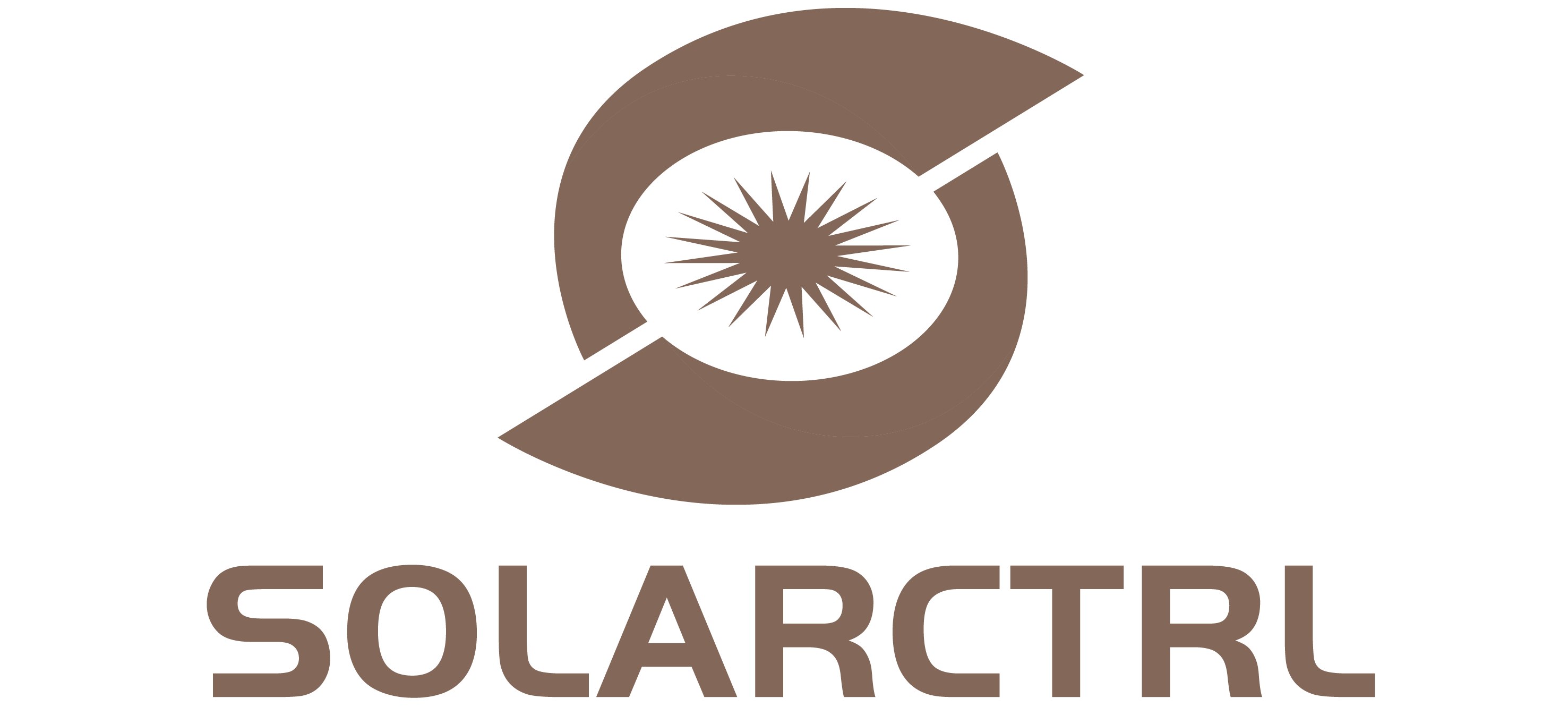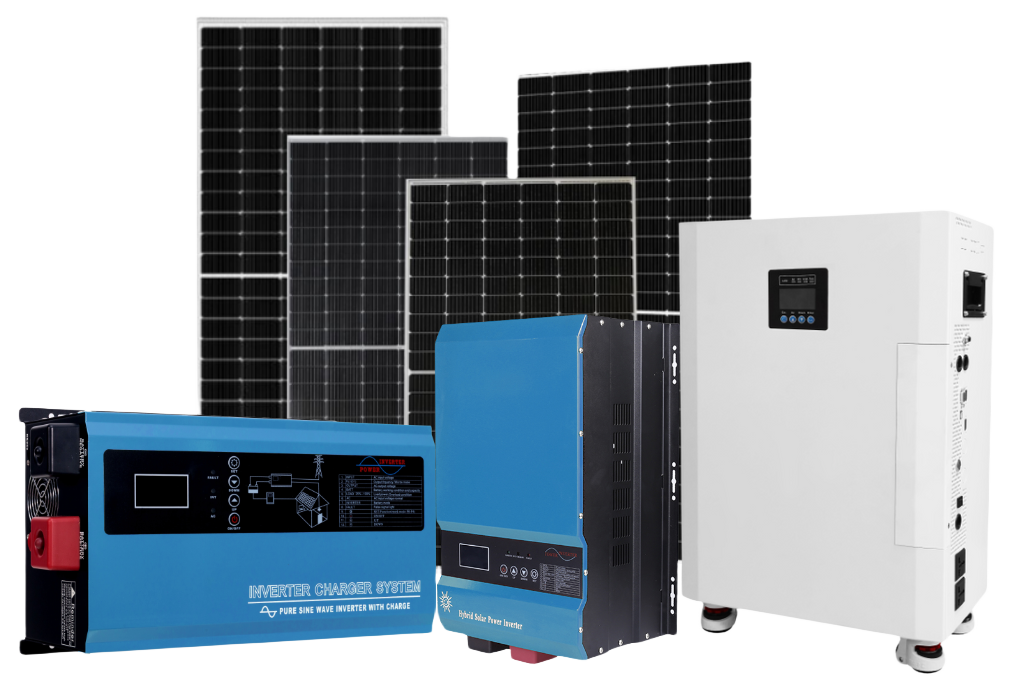Portable Power Station Manufacturer
Certified with CE, IEC, ROHS, ISO9001 certifications, with fast delivery, fexible MOQ and OEM services.
Portable Power Station Manufacturer
Certified with CE, IEC, ROHS, ISO9001 certifications, with fast delivery, fexible MOQ and OEM services.
The Best Choices for Portable Power Station
SolarCtrl Portable Power Station an all-in-one solution, combining solar inverter, MPPT solar charge controller, and LiFePO4 Lithium battery. Benefit from a lithium battery cycle time of up to 4000 times, the discharge rate can be reached to over 90%.

The Best Choices for Portable Power Station
SolarCtrl Portable Power Station an all-in-one solution, combining solar inverter, MPPT solar charge controller, and LiFePO4 Lithium battery. Benefit from a lithium battery cycle time of up to 4000 times, the discharge rate can be reached to over 90%.

Table Of Contents For This Page
To make sure you can find the information you want quickly,
we have prepared this content directory that will jump to the corresponding location when you click on it.
Table Of Contents For This Page
To make sure you can find the information you want quickly,
we have prepared this content directory that will jump to the corresponding location when you click on it.
General Hot Selling Products
Unlock Operational Efficiency with SolarCtrl’s Customizable Portable Power Station, the epitome of adaptability in renewable energy solutions.
Main Features
- Pure sine wave AC output is the mains standard
- Purifies the harmonic pollution of the mains
- Protects the safety of electrical equipment and users
- Combined solar inverter, MPPT solar charge controller, LiFePO4 Lithium battery all in one
- Lithium battery cycle time up to 4000 times, discharge rate: 90%
- Multiple protection: against short-circuit, overload, short-circuit, low-voltage, and over-voltage protection, etc.
- Intelligent LCD & LED display to observe working status clearly
Application
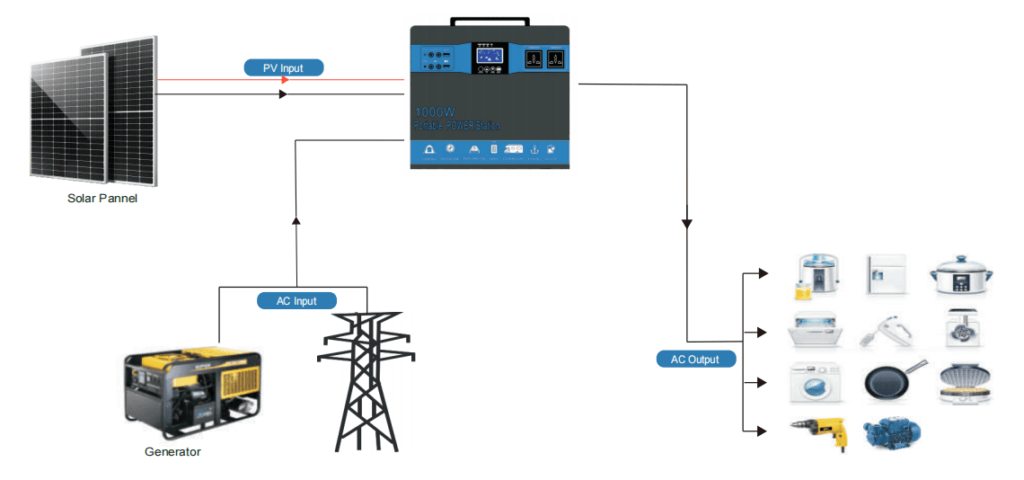
| Model | MPPT Solar Controller | PV Voltage Input Range | Commercial Power Range | AC Freqmency Range | Output Frequency Range (AC Mode) | DC Voltage Input | Temperature Range |
| 1000W 1500W | 40A 50A | 24V: 30-90VDC (MPPT) | 110VAC, 115VAC, 120VAC, 220VAC, 230VAC, 240VAC (Optional) | 45-65HZ | Tracking Automatically/ Shared Frequency With The Commercial Inversion State: 60/50±0.5 Hz | 24VDC | -10℃~+50℃ |
General Hot Selling Products
Unlock Operational Efficiency with SolarCtrl’s Customizable Portable Power Station, the epitome of adaptability in renewable energy solutions.


Main Features
- Pure sine wave AC output is the mains standard
- Purifies the harmonic pollution of the mains
- Protects the safety of electrical equipment and users
- Combined solar inverter, MPPT solar charge controller, LiFePO4 Lithium battery all in one
- Lithium battery cycle time up to 4000 times, discharge rate: 90%
- Multiple protection: against short-circuit, overload, short-circuit, low-voltage, and over-voltage protection, etc.
- Intelligent LCD & LED display to observe working status clearly
Application

About SolarCtrl
SolarCtrl is a Portable Power Station Manufacturer in China.
No matter if you are looking for a wholesale supplier or if you need custom-made portable power station, we can all help.
Send an inquiry to get an instant quote now, Let’s raise your business to the next level !
About SolarCtrl
SolarCtrl is a Portable Power Station Manufacturer in China.
No matter if you are looking for a wholesale supplier or if you need custom-made portable power station, we can all help.
Send an inquiry to get an instant quote now, Let’s raise your business to the next level !
A Brief Self-Nomination, Why Choose SolarCtrl ?
Founded in 2009, SolarCtrl is a professional large-scale manufacturer and supplier in solar energy industry integrating R&D and production together.
Source Directly from SolarCtrl’s Factory Lines—where cutting-edge technology meets cost-effective solutions for your business.
Strong Production Capacity
Experience uninterrupted solutions with our strong production capacity, ensuring timely delivery and consistent quality tailored to your needs.
Top Quality With Affordable Price
Strike the perfect balance between quality and cost. With our high-quality yet cost-effective portable power stations, your business gains a competitive edge without breaking the bank.
Customization & OEM Support
Enjoy the freedom to choose from customizable service. Our portable power stations are crafted to meet your specific requirements.
Flexible MOQ and Swift Delivery
Scale your operations seamlessly with our flexible minimum order quantities and quick delivery times.
Industry-Leading Certifications
Our portable power stations come with top industry certifications, offering you and your clients the assurance of safety and quality.
Full Service & Support
From pre-sales consultations to after-sales technical support, we’ve got you covered every step of the way.
A Brief Self-Nomination, Why Choose SolarCtrl ?
Founded in 2009, SolarCtrl is a professional large-scale manufacturer and supplier in solar energy industry integrating R&D and production together.
Source Directly from SolarCtrl’s Factory Lines—where cutting-edge technology meets cost-effective solutions for your business.
Strong Production Capacity
Experience uninterrupted solutions with our strong production capacity, ensuring timely delivery and consistent quality tailored to your needs.
Top Quality With Affordable Price
Strike the perfect balance between quality and cost. With our high-quality yet cost-effective portable power stations, your business gains a competitive edge without breaking the bank.
Customization & OEM Support
Enjoy the freedom to choose from customizable service. Our portable power stations are crafted to meet your specific requirements.
Flexible MOQ and Swift Delivery
Scale your operations seamlessly with our flexible minimum order quantities and quick delivery times.
Industry-Leading Certifications
Our portable power stations come with top industry certifications, offering you and your clients the assurance of safety and quality.
Full Service & Support
From pre-sales consultations to after-sales technical support, we’ve got you covered every step of the way.
Components of a Portable Power Station
Understanding the components that make up a portable power station can help users better appreciate its functionality and capabilities. This article delves into the essential parts that collectively give a portable power station its unique features.
Battery Unit
The battery is the heart of the power station, storing the energy that can be drawn upon when needed. Various types of batteries are used, such as lead-acid, lithium-ion, or nickel-metal hydride, each with its own pros and cons concerning capacity, weight, and lifespan.
Inverter
The inverter’s role is to convert the stored DC (Direct Current) power in the battery into AC (Alternating Current) power, which is what most appliances and devices use. The quality of the inverter determines the range and types of devices that can be powered.
Solar Charge Controller
This component manages the flow of energy between the solar panel and the battery. It comes in two main types: Maximum Power Point Tracking (MPPT) and Pulse-Width Modulation (PWM). The controller ensures the battery is charged efficiently and prevents overcharging.


Input/Output Ports
Various input and output ports allow the power station to connect to different devices and energy sources. These may include standard USB ports, DC outlets, AC outlets, and sometimes specialized ports for solar panel connectors like MC4.
Display Panel
Many portable power stations come with a display panel to show vital information such as the battery level, output wattage, and input wattage. This feature helps users monitor the station’s performance and make adjustments as needed.
Conclusion
A portable power station is more than just a battery in a box. Its value lies in the integration of various components like the battery unit, inverter, solar charge controller, and multiple input/output ports. Understanding these components can help users make more informed choices and better utilize their portable power stations.
Components of a Portable Power Station
Understanding the components that make up a portable power station can help users better appreciate its functionality and capabilities. This article delves into the essential parts that collectively give a portable power station its unique features.

Battery Unit
The battery is the heart of the power station, storing the energy that can be drawn upon when needed. Various types of batteries are used, such as lead-acid, lithium-ion, or nickel-metal hydride, each with its own pros and cons concerning capacity, weight, and lifespan.
Inverter
The inverter’s role is to convert the stored DC (Direct Current) power in the battery into AC (Alternating Current) power, which is what most appliances and devices use. The quality of the inverter determines the range and types of devices that can be powered.
Solar Charge Controller
This component manages the flow of energy between the solar panel and the battery. It comes in two main types: Maximum Power Point Tracking (MPPT) and Pulse-Width Modulation (PWM). The controller ensures the battery is charged efficiently and prevents overcharging.

Input/Output Ports
Various input and output ports allow the power station to connect to different devices and energy sources. These may include standard USB ports, DC outlets, AC outlets, and sometimes specialized ports for solar panel connectors like MC4.
Display Panel
Many portable power stations come with a display panel to show vital information such as the battery level, output wattage, and input wattage. This feature helps users monitor the station’s performance and make adjustments as needed.
Conclusion
A portable power station is more than just a battery in a box. Its value lies in the integration of various components like the battery unit, inverter, solar charge controller, and multiple input/output ports. Understanding these components can help users make more informed choices and better utilize their portable power stations.
Battery Types in Portable Power Stations
When it comes to selecting a portable power station, one of the most critical considerations is the type of battery it utilizes. This guide aims to educate readers about the different types of batteries commonly found in portable power stations and their respective advantages and disadvantages.
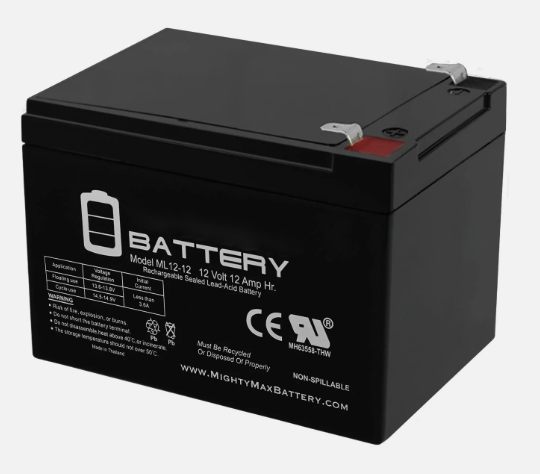
Lead Acid Batteries
Lead-acid batteries are often used in portable power stations due to their reliability and lower cost. While they may not offer the highest energy density, they do provide a stable and consistent energy output. However, their heavyweight and larger size make them less ideal for portable solutions, and they also require regular maintenance.
Lithium-Ion Batteries
Lithium-ion batteries have become increasingly popular in portable power stations due to their high energy density and lightweight nature. These batteries can store more energy while taking up less space, making them ideal for portability. However, they can be more expensive and may require special safety measures to prevent overheating.
Nickel-Metal Hydride Batteries
Nickel-metal hydride batteries offer a middle ground between lead-acid and lithium-ion options. They are more environmentally friendly than lead-acid batteries and provide a good energy density. However, they can be sensitive to high temperatures and may suffer from the “memory effect,” which can reduce their lifespan if not properly maintained.
Solid-State Batteries
Solid-state batteries are an emerging technology that promises higher energy density and safety levels than current lithium-ion batteries. They are still in the experimental phase but could revolutionize portable power stations by offering lighter, more compact, and safer battery options in the future.

Conclusion
Understanding the types of batteries used in portable power stations can significantly impact your choice. Each battery type comes with its own set of advantages and disadvantages, from the reliable but bulky lead-acid batteries to the compact but expensive lithium-ion variants. As technology advances, we may also see the rise of solid-state batteries as a viable option.
Battery Types in Portable Power Stations
When it comes to selecting a portable power station, one of the most critical considerations is the type of battery it utilizes. This guide aims to educate readers about the different types of batteries commonly found in portable power stations and their respective advantages and disadvantages.

Lead Acid Batteries
Lead-acid batteries are often used in portable power stations due to their reliability and lower cost. While they may not offer the highest energy density, they do provide a stable and consistent energy output. However, their heavyweight and larger size make them less ideal for portable solutions, and they also require regular maintenance.
Lithium-Ion Batteries
Lithium-ion batteries have become increasingly popular in portable power stations due to their high energy density and lightweight nature. These batteries can store more energy while taking up less space, making them ideal for portability. However, they can be more expensive and may require special safety measures to prevent overheating.

Nickel-Metal Hydride Batteries
Nickel-metal hydride batteries offer a middle ground between lead-acid and lithium-ion options. They are more environmentally friendly than lead-acid batteries and provide a good energy density. However, they can be sensitive to high temperatures and may suffer from the “memory effect,” which can reduce their lifespan if not properly maintained.
Solid-State Batteries
Solid-state batteries are an emerging technology that promises higher energy density and safety levels than current lithium-ion batteries. They are still in the experimental phase but could revolutionize portable power stations by offering lighter, more compact, and safer battery options in the future.
Conclusion
Understanding the types of batteries used in portable power stations can significantly impact your choice. Each battery type comes with its own set of advantages and disadvantages, from the reliable but bulky lead-acid batteries to the compact but expensive lithium-ion variants. As technology advances, we may also see the rise of solid-state batteries as a viable option.
Different Applications for Portable Power Stations
Portable power stations offer a versatile solution to energy needs across various scenarios. Whether you’re an adventurer, a contractor, or someone who requires backup power, understanding the different applications of these units can help you make an informed decision. This article explores various uses of portable power stations.

Outdoor Recreation
Portable power stations are indispensable for outdoor enthusiasts who spend extended periods in nature. Whether you’re camping, fishing, or hiking, these units can power up devices like smartphones, cameras, and even cooking appliances, ensuring you’re never left in the dark.
Construction Sites
Construction workers often find themselves in locations where electrical grids are either unreliable or nonexistent. Portable power stations can serve as a convenient power source for operating tools like drills, saws, and lighting systems, thereby streamlining on-site tasks.
Emergency Backup Power
In the event of natural disasters or power outages, a portable power station can be a lifesaver. These units can power essential devices such as radios, medical equipment, and emergency lighting, providing a level of security and preparedness when it’s needed most.
Remote Work
The rise of remote work has created a need for power solutions that are as flexible as the modern workforce. Portable power stations can enable digital nomads to work from varied locations by keeping laptops, phones, and other devices charged and operational.
Event Hosting
Portable power stations can be indispensable when hosting outdoor events like concerts, festivals, or even weddings. They can power sound systems, lighting, and food preparation equipment, allowing for an enhanced experience without the need for cumbersome generators or risky extension cords stretched over long distances.
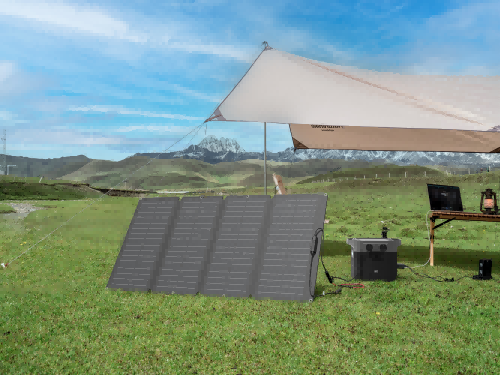

Healthcare and Medical Use
In healthcare scenarios, particularly in rural or temporary clinics, portable power stations can be lifesavers. They can run essential medical devices like oxygen concentrators, CPAP machines, and even diagnostic equipment. Given their relatively silent operation compared to traditional generators, they are less intrusive and more suitable for healthcare environments.
Electric Vehicle Charging
Some high-capacity portable power stations can serve as a temporary charging solution for electric vehicles. While they won’t replace a dedicated EV charging station, they can provide sufficient power for short trips or emergency scenarios where traditional charging options are unavailable.
Conclusion
Portable power stations offer remarkable versatility, serving various needs across multiple scenarios, from leisure and lifestyle to work and emergency preparedness. As technology continues to advance, these power solutions are likely to become even more efficient, making them an increasingly valuable resource for a myriad of applications.
Different Applications for Portable Power Stations
Portable power stations offer a versatile solution to energy needs across various scenarios. Whether you’re an adventurer, a contractor, or someone who requires backup power, understanding the different applications of these units can help you make an informed decision. This article explores various uses of portable power stations.

Outdoor Recreation
Portable power stations are indispensable for outdoor enthusiasts who spend extended periods in nature. Whether you’re camping, fishing, or hiking, these units can power up devices like smartphones, cameras, and even cooking appliances, ensuring you’re never left in the dark.
Construction Sites
Construction workers often find themselves in locations where electrical grids are either unreliable or nonexistent. Portable power stations can serve as a convenient power source for operating tools like drills, saws, and lighting systems, thereby streamlining on-site tasks.

Emergency Backup Power
In the event of natural disasters or power outages, a portable power station can be a lifesaver. These units can power essential devices such as radios, medical equipment, and emergency lighting, providing a level of security and preparedness when it’s needed most.
Remote Work
The rise of remote work has created a need for power solutions that are as flexible as the modern workforce. Portable power stations can enable digital nomads to work from varied locations by keeping laptops, phones, and other devices charged and operational.
Event Hosting
Portable power stations can be indispensable when hosting outdoor events like concerts, festivals, or even weddings. They can power sound systems, lighting, and food preparation equipment, allowing for an enhanced experience without the need for cumbersome generators or risky extension cords stretched over long distances.

Healthcare and Medical Use
In healthcare scenarios, particularly in rural or temporary clinics, portable power stations can be lifesavers. They can run essential medical devices like oxygen concentrators, CPAP machines, and even diagnostic equipment. Given their relatively silent operation compared to traditional generators, they are less intrusive and more suitable for healthcare environments.
Electric Vehicle Charging
Some high-capacity portable power stations can serve as a temporary charging solution for electric vehicles. While they won’t replace a dedicated EV charging station, they can provide sufficient power for short trips or emergency scenarios where traditional charging options are unavailable.
Conclusion
Portable power stations offer remarkable versatility, serving various needs across multiple scenarios, from leisure and lifestyle to work and emergency preparedness. As technology continues to advance, these power solutions are likely to become even more efficient, making them an increasingly valuable resource for a myriad of applications.
How to Achieve Compatibility Between Portable Power Stations and Solar Panels
Achieving compatibility between portable power stations and solar panels is essential for optimizing the performance and efficiency of your off-grid energy solutions. The following guide outlines the steps you can take to ensure successful pairing between these two technologies.

Identify Specifications
The first step in achieving compatibility is to review the technical specifications of both the portable power station and the solar panel. Look for the following:
– Voltage Range: Make sure the output voltage of the solar panel falls within the acceptable input voltage range of the portable power station.
– Amperage: Check that the amperage produced by the solar panel does not exceed the maximum amperage input of the power station.
Choose the Right Controller
Modern portable power stations usually feature built-in solar charge controllers, which come in two varieties:
– MPPT (Maximum Power Point Tracking): More efficient but often more expensive. Ideal for larger solar panel setups.
– PWM (Pulse-Width Modulation): Less efficient but more affordable. Suitable for smaller setups.
Select a solar panel that is compatible with the type of charge controller your portable power station uses.

Connector Types
Ensure that the connector types of both the solar panel and portable power station match or are adaptable. Common connectors include MC4, Anderson Powerpole, and 8mm. Adapters are available if the connectors are different but compatible.

Real-world Testing
Once you have matched the specifications and connectors, the final step is to test the setup in real-world conditions. This involves:
– Charging Efficiency: Monitor how quickly the portable power station charges in various light conditions.
– Power Output: Check that the power station can efficiently run the devices or appliances you intend to use.
– System Stability: Ensure that there are no fluctuations or drops in power that could damage your devices or make the system unreliable.
Conclusion
Achieving compatibility between portable power stations and solar panels involves a careful review of technical specifications, choosing the right solar charge controller, and ensuring matching or adaptable connectors. A final real-world test can confirm the compatibility and efficiency of your integrated solar energy solution.
How to Achieve Compatibility Between Portable Power Stations and Solar Panels
Achieving compatibility between portable power stations and solar panels is essential for optimizing the performance and efficiency of your off-grid energy solutions. The following guide outlines the steps you can take to ensure successful pairing between these two technologies.

Identify Specifications
The first step in achieving compatibility is to review the technical specifications of both the portable power station and the solar panel. Look for the following:
– Voltage Range: Make sure the output voltage of the solar panel falls within the acceptable input voltage range of the portable power station.
– Amperage: Check that the amperage produced by the solar panel does not exceed the maximum amperage input of the power station.
Choose the Right Controller
Modern portable power stations usually feature built-in solar charge controllers, which come in two varieties:
– MPPT (Maximum Power Point Tracking): More efficient but often more expensive. Ideal for larger solar panel setups.
– PWM (Pulse-Width Modulation): Less efficient but more affordable. Suitable for smaller setups.
Select a solar panel that is compatible with the type of charge controller your portable power station uses.

Connector Types
Ensure that the connector types of both the solar panel and portable power station match or are adaptable. Common connectors include MC4, Anderson Powerpole, and 8mm. Adapters are available if the connectors are different but compatible.
Real-world Testing
Once you have matched the specifications and connectors, the final step is to test the setup in real-world conditions. This involves:
– Charging Efficiency: Monitor how quickly the portable power station charges in various light conditions.
– Power Output: Check that the power station can efficiently run the devices or appliances you intend to use.
– System Stability: Ensure that there are no fluctuations or drops in power that could damage your devices or make the system unreliable.

Conclusion
Achieving compatibility between portable power stations and solar panels involves a careful review of technical specifications, choosing the right solar charge controller, and ensuring matching or adaptable connectors. A final real-world test can confirm the compatibility and efficiency of your integrated solar energy solution.
Comparative Analysis: Portable Power Station, Traditional Generators, and Power Bank
Portable Power Stations
Portable power stations are compact, versatile, and often lightweight, making them ideal for a variety of settings from outdoor trips to emergency backup. They typically run on lithium-ion batteries and can be recharged via solar panels, wall outlets, or car chargers. Portable power stations are generally silent and emit no fumes, making them eco-friendly and suitable for indoor use.
Key Features:
- Versatile with multiple output ports
- Eco-friendly and silent operation
- Suitable for indoor and outdoor use
- Can be charged through various means

Traditional Generators
Traditional generators have been the go-to source for high-capacity power needs for many years. These units run on fossil fuels like gasoline, propane, or diesel. They offer high power output and can run heavy-duty appliances and tools, making them ideal for construction sites or homes during extended power outages.
Key Features:
- High power output
- Suitable for heavy-duty applications
- Longer run-time
- Emit fumes and make noise
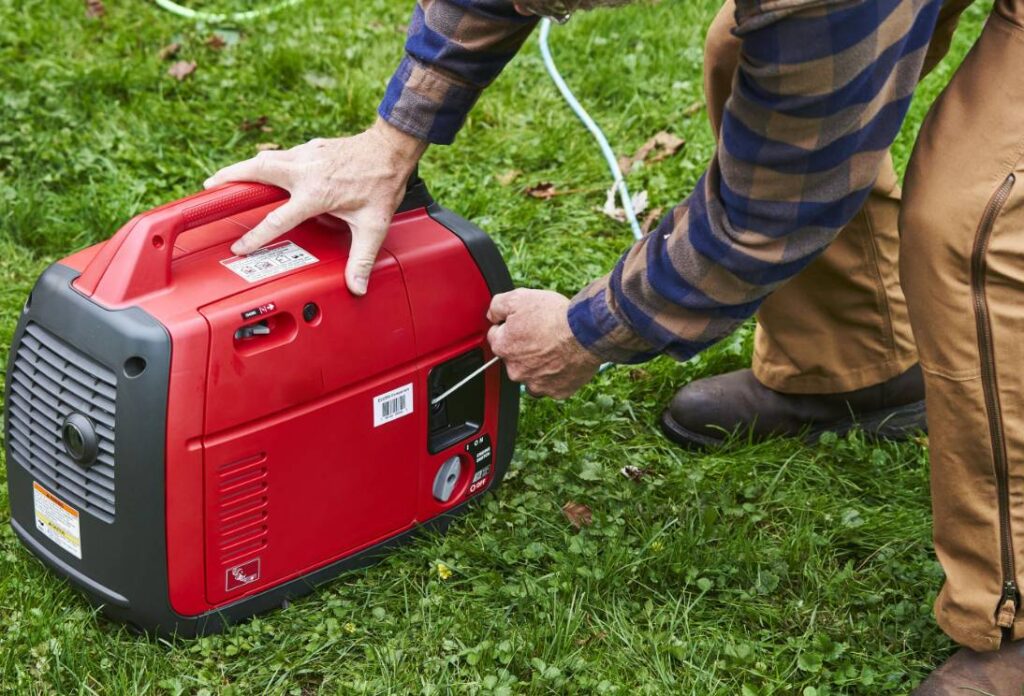
Power Banks
Power banks are the most portable and convenient option but offer the lowest capacity. They are ideal for small electronic devices like smartphones, tablets, and laptops. Most power banks use lithium-ion or lithium-polymer batteries and can be charged via a USB port from a wall charger or computer.
Key Features:
- Highly portable and lightweight
- Suitable for charging small electronics
- Limited capacity
- Can be charged via USB

Conclusion
To summarize, portable power stations offer a balanced mix of versatility, eco-friendliness, and sufficient capacity for most consumer needs. Traditional generators provide the highest power output but are less eco-friendly and more cumbersome. Power banks are highly portable but have limited capacity, making them suitable only for small devices.
Comparative Analysis: Portable Power Station, Traditional Generators, and Power Bank

Portable Power Stations
Portable power stations are compact, versatile, and often lightweight, making them ideal for a variety of settings from outdoor trips to emergency backup. They typically run on lithium-ion batteries and can be recharged via solar panels, wall outlets, or car chargers. Portable power stations are generally silent and emit no fumes, making them eco-friendly and suitable for indoor use.
Key Features:
- Versatile with multiple output ports
- Eco-friendly and silent operation
- Suitable for indoor and outdoor use
- Can be charged through various means
Traditional Generators
Traditional generators have been the go-to source for high-capacity power needs for many years. These units run on fossil fuels like gasoline, propane, or diesel. They offer high power output and can run heavy-duty appliances and tools, making them ideal for construction sites or homes during extended power outages.
Key Features:
- High power output
- Suitable for heavy-duty applications
- Longer run-time
- Emit fumes and make noise


Power Banks
Power banks are the most portable and convenient option but offer the lowest capacity. They are ideal for small electronic devices like smartphones, tablets, and laptops. Most power banks use lithium-ion or lithium-polymer batteries and can be charged via a USB port from a wall charger or computer.
Key Features:
- Highly portable and lightweight
- Suitable for charging small electronics
- Limited capacity
- Can be charged via USB
Conclusion
To summarize, portable power stations offer a balanced mix of versatility, eco-friendliness, and sufficient capacity for most consumer needs. Traditional generators provide the highest power output but are less eco-friendly and more cumbersome. Power banks are highly portable but have limited capacity, making them suitable only for small devices.
Commonly Asked Questions
Yes, we provide samples and charge for the samples with freight cost. The sample fees will be returned if the order quantity over 200pcs.
We have streamlined our production processes to ensure that most of our products are readily available in stock. This means that you can purchase samples and have them shipped at any time and without delay.
Technical support hotline or email for customers to contact in case of technical issues with our products.
Onsite technical support to assist with the installation and maintenance of the products.
Online resources such as manuals, troubleshooting guides, and FAQs to help customers resolve common issues with the products.
Warranty or guarantee period to ensure that customers are covered in case of product defects or malfunctions.
Repair and replacement services for damaged or faulty products.
To provide local technical support, we offer a range of services to VIP distributors, including installation, usage guidance, maintenance, and other related support, free of charge. For larger projects with a capacity of over 55KW, if on-site technical support is required, the cost of airfare, lodging, and meals must be covered by the distributor.
Our technical support services include system design, installation, commissioning, repair, and maintenance. We aim to provide prompt and effective technical support to ensure the smooth operation of your equipment and systems.
To optimize our technical support services, we continuously update our knowledge and skills, and we invest in the latest tools and technologies to enhance our capabilities. In addition, we strive to maintain open communication channels with our clients to ensure that their needs and concerns are addressed promptly and effectively.
Machine appearance customization: Customers can choose the style and color of the machine according to their preferences.
Logo customization: Customers can have their own logo printed on the machine to increase brand recognition.
Label customization: Customers can customize the labels on the machine to include specific information or warnings.
LCD display customization: Customers can customize the information displayed on the LCD screen to meet their specific needs.
Packaging customization: Customers can customize the packaging of the machine to suit their requirements, including the design and materials used.
For orders of less than 10 units, we generally ship within two days. For orders between 10 and 100 units, we aim to ship within one week. To ensure the quality of our products, we keep sufficient inventory and perform a final round of testing before packaging and shipping.
Please note that the delivery time may vary depending on factors such as the destination, shipping method, and customs clearance processes. We work with reliable shipping partners to ensure timely delivery and provide tracking information for all shipments.
We usually ship by DHL, UPS, FedEx, or TNT. Bulk orders can be shipped by airline or sea shipping as well. It is important to note that the choice of shipping method may depend on factors such as the size and weight of the shipment, the destination, and the urgency of the delivery.
We offer several payment methods for your convenience, including T/T, L/C, Western Union, PayPal, and cash. Please choose the payment method that works best for you.
Commonly Asked Questions
Yes, we provide samples and charge for the samples with freight cost. The sample fees will be returned if the order quantity over 200pcs.
We have streamlined our production processes to ensure that most of our products are readily available in stock. This means that you can purchase samples and have them shipped at any time and without delay.
Technical support hotline or email for customers to contact in case of technical issues with our products.
Onsite technical support to assist with the installation and maintenance of the products.
Online resources such as manuals, troubleshooting guides, and FAQs to help customers resolve common issues with the products.
Warranty or guarantee period to ensure that customers are covered in case of product defects or malfunctions.
Repair and replacement services for damaged or faulty products.
To provide local technical support, we offer a range of services to VIP distributors, including installation, usage guidance, maintenance, and other related support, free of charge. For larger projects with a capacity of over 55KW, if on-site technical support is required, the cost of airfare, lodging, and meals must be covered by the distributor.
Our technical support services include system design, installation, commissioning, repair, and maintenance. We aim to provide prompt and effective technical support to ensure the smooth operation of your equipment and systems.
To optimize our technical support services, we continuously update our knowledge and skills, and we invest in the latest tools and technologies to enhance our capabilities. In addition, we strive to maintain open communication channels with our clients to ensure that their needs and concerns are addressed promptly and effectively.
Machine appearance customization: Customers can choose the style and color of the machine according to their preferences.
Logo customization: Customers can have their own logo printed on the machine to increase brand recognition.
Label customization: Customers can customize the labels on the machine to include specific information or warnings.
LCD display customization: Customers can customize the information displayed on the LCD screen to meet their specific needs.
Packaging customization: Customers can customize the packaging of the machine to suit their requirements, including the design and materials used.
For orders of less than 10 units, we generally ship within two days. For orders between 10 and 100 units, we aim to ship within one week. To ensure the quality of our products, we keep sufficient inventory and perform a final round of testing before packaging and shipping.
Please note that the delivery time may vary depending on factors such as the destination, shipping method, and customs clearance processes. We work with reliable shipping partners to ensure timely delivery and provide tracking information for all shipments.
We usually ship by DHL, UPS, FedEx, or TNT. Bulk orders can be shipped by airline or sea shipping as well. It is important to note that the choice of shipping method may depend on factors such as the size and weight of the shipment, the destination, and the urgency of the delivery.
We offer several payment methods for your convenience, including T/T, L/C, Western Union, PayPal, and cash. Please choose the payment method that works best for you.
Your Trusted Source For
Let's raise your business to the next level, NOW! →
Start with following 4 steps:
1
Tell Us What You Need
Tell us as specific as possible of your needs, let us fully understand what you want.
2
Get Solution & Quote
We will work on the best solution according to your requirements, the specific quote will be provided within 24 hours.
3
Approve for Sample Order
Upon receiving your sample order and deposit, we will arrange for sample testing and shipment.
4
Approve for Mass Production
We will start mass production and handle the shipment after getting your approval and deposit.

Get A Free Quote!
- We will contact you within 24 hours
*All your information will be kept strictly confidential and our business staff will ensure that your private information is absolutely safe!
Your Trusted Source For
Let's raise your business to the next level, NOW! →
Start with following 4 steps:
1
Tell Us What You Need
Tell us as specific as possible of your needs, let us fully understand what you want.
2
Get Solution & Quote
We will work on the best solution according to your requirements, the specific quote will be provided within 24 hours.
3
Approve for Sample Order
Upon receiving your sample order and deposit, we will arrange for sample testing and shipment.
4
Approve for Mass Production
We will start mass production and handle the shipment after getting your approval and deposit.
Get A Free Quote!
- We will contact you within 24 hours
*All your information will be kept strictly confidential and our business staff will ensure that your private information is absolutely safe!
More Related Solar Products

High Frequency Inverter
SolarCtrl High Frequency Inverter offers a wide PV input voltage range, making it adaptable to various solar setups. Designed to thrive even in challenging environments with an anti-dusk kit.

Low Frequency Inverter
With a versatile pure sine wave output ranging from 1kW to 12kW, SolarCtrl Low Frequency Inverter can adapt to various power needs, and handle 3 times peak power effortlessly with its robust load capacity, which is perfect for inductive loads like motors, pumps, and air conditioners.

Solar Pump Inverter
SolarCtrl Solar Pump Inverter is efficient which get 5%-10% higher than orther inverter which need programming. 30% more water output with advanced inverter control algorithm and Maximum PowerPoint tracking efficiency reach 99% with advanced MPPT algorithm.
More Related Solar Products

High Frequency Inverter
SolarCtrl High Frequency Inverter offers a wide PV input voltage range, making it adaptable to various solar setups. Designed to thrive even in challenging environments with an anti-dusk kit.

Low Frequency Inverter
With a versatile pure sine wave output ranging from 1kW to 12kW, SolarCtrl Low Frequency Inverter can adapt to various power needs, and handle 3 times peak power effortlessly with its robust load capacity, which is perfect for inductive loads like motors, pumps, and air conditioners.

Solar Pump Inverter
SolarCtrl Solar Pump Inverter is efficient which get 5%-10% higher than orther inverter which need programming. 30% more water output with advanced inverter control algorithm and Maximum PowerPoint tracking efficiency reach 99% with advanced MPPT algorithm.
More Related Solar Energy Professional Articles
Why Is My Solar Charge Controller Cutting Off Power at Night?
Solar charge controllers play a vital role in regulating the power generated by solar panels and ensuring that your battery system operates efficiently and safely. However, many users experience a frustrating issue where their solar charge controller cuts off power at night, leaving them without power during critical hours. Understanding the reasons for this behavior is essential to maintaining a well-functioning solar system.
How to Set Up the Inverter of a Solar System?
Setting up the inverter of a solar system is a critical step in ensuring your system runs smoothly and efficiently. Whether you’re installing a solar system for your home, business, or a larger-scale project, the inverter plays a key role in converting the direct current (DC) from your solar panels into usable alternating current (AC) for your appliances. In this guide, we’ll walk you through the essential steps for setting up your solar inverter, providing practical tips along the way.
How to Maximize the Efficiency of Solar Panels?
Solar panels are an excellent investment in renewable energy, offering both environmental benefits and long-term cost savings. However, to truly get the most out of your solar power system, it’s important to maximize its efficiency. Even small adjustments can significantly improve your solar panels’ performance, helping you generate more power and save more money.
Why Are Most Commercial Solar Panels Only 25% Efficient?
Commercial solar panels have revolutionized how we generate clean energy, but despite the progress, most panels still hover around 25% efficiency. Given the rapid pace of technological advancements in other areas, why is solar energy conversion still relatively low? In this article, we’ll explore the factors that limit solar panel efficiency, the science behind these limitations, and what future advancements could bring.
More Related Solar Energy Professional Articles

What Are Solar Panel Mounting Rails and Racks?
Solar energy has become a cornerstone of renewable energy solutions worldwide. A critical component of any solar installation is the mounting system, which includes mounting rails and racks. Understanding their roles and importance ensures that solar panels are securely installed and optimally positioned for maximum energy generation.
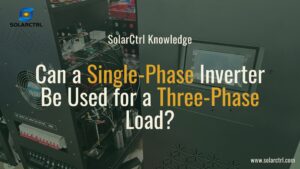
Can a Single-Phase Inverter Be Used for a Three-Phase Load?
When considering solar energy solutions, one common question arises: can a single-phase inverter be used for a three-phase load? Understanding the compatibility and implications of using a single-phase inverter in a three-phase system is crucial for homeowners, solar energy enthusiasts, and professionals in the field.

Does a hybrid solar inverter have an inbuilt charger?
Are you considering investing in solar energy for your home or business? One common question that arises is whether a hybrid solar inverter includes an inbuilt charger. Understanding the components and functionality of a hybrid solar inverter can significantly impact your decision-making process and help you make the most efficient and cost-effective choice for your energy needs.

What’s the Typical Lifetime of Solar Panels?
When you invest in solar panels, you’re setting up for decades of renewable energy. But exactly how long can you expect your solar panels to function efficiently? This is crucial as it impacts the return on investment and your overall energy strategy.
Solar Energy Specialist
We are experts in solar energy industry. If you think you have a problem with it call us for a free, no-obligation, quote.





